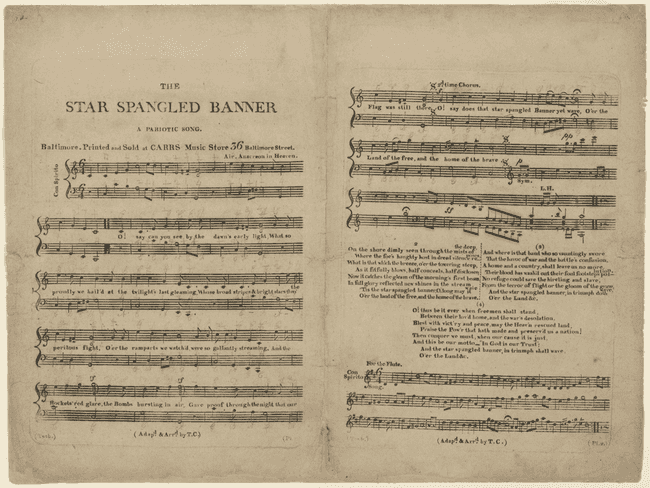Tipu Sultan And America's National Anthem
The first sheet music publication of The Star Spangled Banner (Thomas Carr, 1814)
"And the rocket’s red glare, the bombs bursting in air, gave proof through the night that our flag was still there"
If you’ve heard The Star Spangled Banner, the American National anthem, you’ve heard the words, "the rocket’s red glare".
On September 11, 1814, British warships continuously bombarded Fort McHenry, in Baltimore, in the United States. This was a part of the War of 1812, also known as the Second War of Independence in America, fought between the United States and Britain. The Americans managed to withstand the relentless bombardment, and when the bombs and rockets fell silent, they hoisted an enormous American flag on top of the fort the next morning.
A lawyer from Washington, Francis Scott Key, witnessed the intensity of this entire battle from a ship off the coast of Baltimore. It left a deep imprint on his mind. But, when he saw the American flag come up on the fort the next morning, he was so moved that he composed a poem he called "The Defence of Fort McHenry". The poem recreated in words the entire scene of battle including the British rocket’s red glare. It embodied American patriotism. That poem later came to be known as the Star Spangled Banner and eventually, a century later, become the American National Anthem.
Now let's see the Tipu Sultan connection with America's National anthem.
Mysore won the famous battle of Pollilur in 1780 against the British was because Tipu’s rockets struck the British’s ammunition tumbrils. Despite his clever use of rockets, Tipu Sultan and his Mysore army couldn’t hold out for too long. Mysore was eventually defeated by the British. After defeating Tipu, what the British did was actually spend some time studying his rockets to develop their own versions. That’s how much of an impression Tipu’s rockets had made on the British. Eventually, Sir William Congreve, an English artillery officer, developed a series of rockets called the Congreve rockets.
The British used these newly developed rockets in a number of their military escapades thereafter. And one such use was against the Americans in 1814. The rockets that Frances Key saw in the air and which inspired the line "And the rockets red glare" actually was a rocket that was in turn inspired by an Indian’s wizardry in rocketry.
Source : Mission ISRO - A Spotify Original Podcast
Pic Credits : By Thomas Carr (arranger) - C[arr], T[homas] (arr.) (1814) The Star Spangled Banner: a Pariotic Song, Baltimore: Carrs Music Store, Public Domain, https://commons.wikimedia.org/w/index.php?curid=91894505
